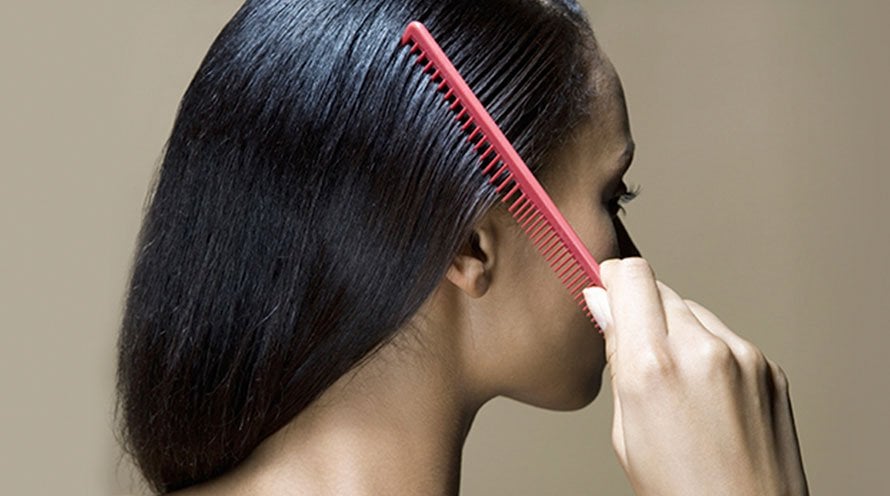How to brush your hair the right way
Are you brushing your hair the right way? (Yes, there is a right way.) Turns out you may not have the skill down pat, even though you’ve been doing it for years. Keep reading to discover the best way to brush your hair whether it’s dry or wet!
Most people don’t receive a formal education on how to properly brush their hair from a young age. The reason? Probably because the act of brushing hair seems pretty straightforward. Take a hair brush, run it through your hair and voila! Right? Well, not really. The truth is there’s way more to de-tangling hair strands than just combing it with any ol’ brush at any ol’ time. But don’t panic. We’re here to bring you up to speed on how to brush your hair properly. Scroll to discover what you may be doing wrong, so you can change up your ways before more damage is done!
THE TECHNIQUE FOR BRUSHING HAIR
Do you brush your hair from root to tip? You’re already off to a bad start! Starting at the root and pulling hair down to the ends can pull strands out of the follicle, resulting in hair breakage. We recommend starting a few inches off the bottom and slowly working your way up the strand in small sections and short strokes to remove hair tangles. This technique is much more efficient at preventing unwanted hair-problem-damaged-hair and breakage.
HOW TO BRUSH WET HAIR
Hair that’s wet and filled with moisture is more fragile than hair that’s dry, which can result in snapping when brushed. As such, it’s recommended to brush hair in a dry state (guide-to-detangling-curls). This may mean allowing your hair to air-dry post-shower before beginning to comb through hair strands. If you’re in a pinch (or just super impatient) and must brush your wet hair, there are a few ways to do it to help reduce the amount of hair damage:
1. Use a towel to dry hair first. Instead of brushing through hair that’s sopping wet, use a microfiber towel to get as much water out as possible first. Bonus points if you let your hair air-dry for about 10 minutes.
2. Use a hair de-tangling product. If your hair is thick, curly, or tangle-prone, we recommend using a conditioning hair product or de-tangling spray to help smooth hair strands before brushing. Try Garnier Whole Blends Miracle Nectar or Miracle Frizz Tamer Treatments or Fructis Pure Clean Detangler + Air Dry Treatment.
3. Use the right hair brush. Believe it or not, there are hair brushes formulated specifically for wet hair! These brushes often boast thin, flexible bristles that are gentler on strands and detangle hair without harsh pulling. There are even brushes that allow air to travel through as you comb, helping to dry strands as the movement goes on. Invest, invest, invest. A wide-toothed comb is also a good option to use on wet hair.
HOW TO BRUSH HAIR THAT’S DRY
If your hair is dry, you have more options when it comes to brushing since dry hair is less prone to damage. Follow the technique listed above, unless your hair is curly. Avoid brushing curly hair when it’s dry. Feel free to use a hair detangling product beforehand to make the process less arduous.
The good thing about brushing dry hair versus wet is that you can choose between more hair brush types. If your hair is straight or wavy, consider a paddle brush. While it’s better to detangle hair strands from the ends to the tip, most hair types can benefit from a distribution of natural oils on the scalp down to the strands from time to time. Doing so can help hair appear naturally smooth and shiny. Just make sure the brush bristles are soft to keep snagging at bay.
Whatever you do, avoid brushing hair too much. Instead of counting every brush stroke until you reach 100 (which is overkill in our opinion!), focus on the quality of brushing to ensure you’re addressing all the hair tangles and knots without causing damage.






